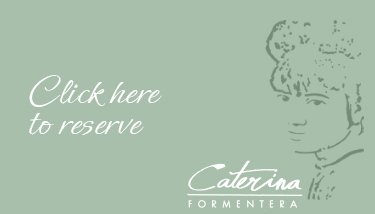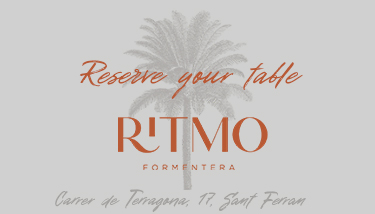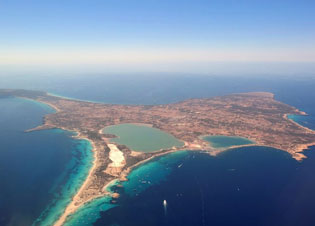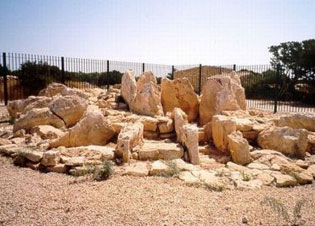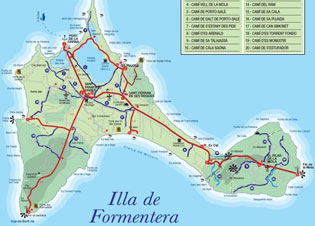
Formentera in fiesta: from local festivals to the legendary flower power
Formentera’s popular festivals are deeply felt by its inhabitants of the island. These are an opportunity to remember and perpetuate ancient rural traditions and customs. Despite the transformation of the island’s economy in recent decades, the locals do not forget their origins.
Between Catholic celebrations and village fairs, including the Flower Power, those who stay in Formentera during these festivals will be able to discover and appreciate a more intimate side of the island, such as the dances and songs performed masterfully by the younger boys.
The dances
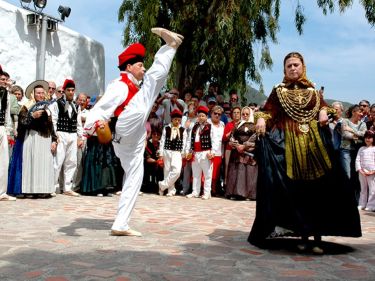
A moment of Ball Pagès
There are different dances from the ancient island tradition, generally called Ball Pagès (peasant dances). These differ in the movements performed by the man rather than the woman. Remember that in ancient times the only opportunities for aggregation were given precisely by the celebration of these festivals.
These dances are usually performed in pairs. Men and women skillfully endeavor to reconstruct the rites of the past. We will see a woman who, with a determined and at the same time passionate expression, revolves around a man; the man, with a proud gaze, in turn will dance around her involving her to the rhythm of music.
There are many dances that these young dancers learn from their masters, among the most famous we can mention the “Nou Rodades”. It simulates a wedding ceremony performed by nine couples of fiancés. You will see these dancers whirling dizzily, exchanging glances and embraces in a truly suggestive spectacle.
Another highly represented dance is the “Sa Llarga”, a very rhythmic dance where the male chooses his partner to the sound of castañuelas (castanets); this dance is opposed in rhythms and intensity to the dance called “Sa Curta” scanned instead by adagios and more peaceful sounds.
Musical instruments and songs
The musical instruments, with which the music for dances and ceremonies were created, represent a great cultural heritage for the island of Formentera: drums, castanets and flutes were all handmade and decorated on the surface. But the most particular instrument is certainly the xerenia: an unusual data-cfasync="false" data-cfasync="false" type of wind instrument (similar to a flute) most likely used by ancient shepherds.
The songs were very different from what we now understand as a “song”: they were stories, novellas, aimed at handing down ancient customs; they were very harmonious but the tone was more like a recitation.
Traditional clothing
The art of weaving, in Formentera, is a technique that has its roots in ancient times. All the clothes were sewn at home using a loom and the most used fabrics were linen, wool and silk (together with other less precious fabrics).
At the beginning of the twentieth century, women wore long dresses made of different materials, they always wore a silk scarf on their heads and wore a small black jacket. There were also numerous handcrafted jewels. The men instead wore a velvet hat and a suit consisting of trousers and a jacket, the latter called “samarreta”.
The festival calendar
During the autumn and winter periods, Formentera experiences a kind of “hibernation” when it comes to local festivals. Despite the island’s mild climate, it is from May that we find the first real festival.
- May 30th: feast of Sant Ferran, in the town of the same name of Sant Ferran de Ses Roques. Those who are in Formentera during this period will be able to attend religious rites, fairs and visit the little market in the church square.
- June on the night between the 23rd and 24th: feast of Sant Joan (Saint John), celebrated in the town of El Pilar de La Mola but also throughout the rest of Spain. On this magnificent night there are numerous events, concerts, fireworks and the inevitable bonfire. According to tradition, numerous objects containing negativity are collected and, at the stroke of midnight, they are burned to eliminate all the evil they contained and bring good luck until the next feast of Sant Joan.
- July 16th: feast of the Virgen del Carmen, which takes place both in La Savina and in Es Pujols. The ceremony begins in the latter town with the solemn mass presided over by the bishop of Ibiza and Formentera. This is followed by the most characteristic event: the procession on the sea. The statue of the Virgin is placed on a boat and followed by many others (anyone can follow the event with their own means). Around seven in the evening, a laurel wreath is thrown into the sea as a gift and thanks to the Virgin Mary.
After this rite, a group of young men dance the characteristic “ball pagès” on the fishermen’s boat, a traditional dance in which the man invites the woman to dance with a sharp tap of the castanets. Back on land, the land procession begins, which will end with a great party in the port of La Savina. The sacred dimension gives way to the more playful and festive aspect, which finds its liveliest expression here. - July 25th: feast of Sant Jaume (Saint James), the patron saint of Formentera. This important festival takes place in Sant Francesc, the island’s capital. All the inhabitants gather in the main square to celebrate with religious rites and village fairs.
- August 5th: feast of the Virgen de las Nieves (Our Lady of the Snows), patron saint of the Pitiusas Islands (Ibiza and Formentera). This is a festival that has re-emerged strongly in recent years and includes cultural and gastronomic events. It has the peculiarity of being celebrated each year in a different village.
- October 12th: feast of the Virgen del Pilar (Our Lady of the Pilar) in El Pilar de la Mola. This title is used to venerate the Virgin Mary in Spain, who is considered the patron saint of the nation. It traditionally coincides with the pig slaughter, a custom that has been handed down over the centuries in rural areas and offers a good opportunity to taste local products such as sobrasada (a spicy sausage) and butifarra (a spicy sausage). There are numerous fairs, concerts, and events organized for this day.
- December 3rd: feast of Sant Francesc, the only festival in winter. This festival is completely dedicated to the saint after whom the village is also named, and given the period in which it is celebrated, the events organized have a more intimate character.
FORMENTERA FESTIVAL CALENDAR:
- Sant Ferran: May 30th
- Sant Joan: June 24th
- Virgen del Carmen: July 16th
- Sant Jaume: July 25th
- Virgen de las Nieves: August 5th
- Virgen del Pilar: October 12th
- Sant Francesc: December 3rd
YOU MAY ALSO LIKE:
“Every trip you live three times:
when you dream it,
when you live it
and when you remember it. “
PROMOTIONAL CODE
Book online using the promotional code ESTATE123 and save with our partners. The code is valid for EVERYONE. You can take advantage of the discounts even if we were unable to provide the right accommodation for you.







